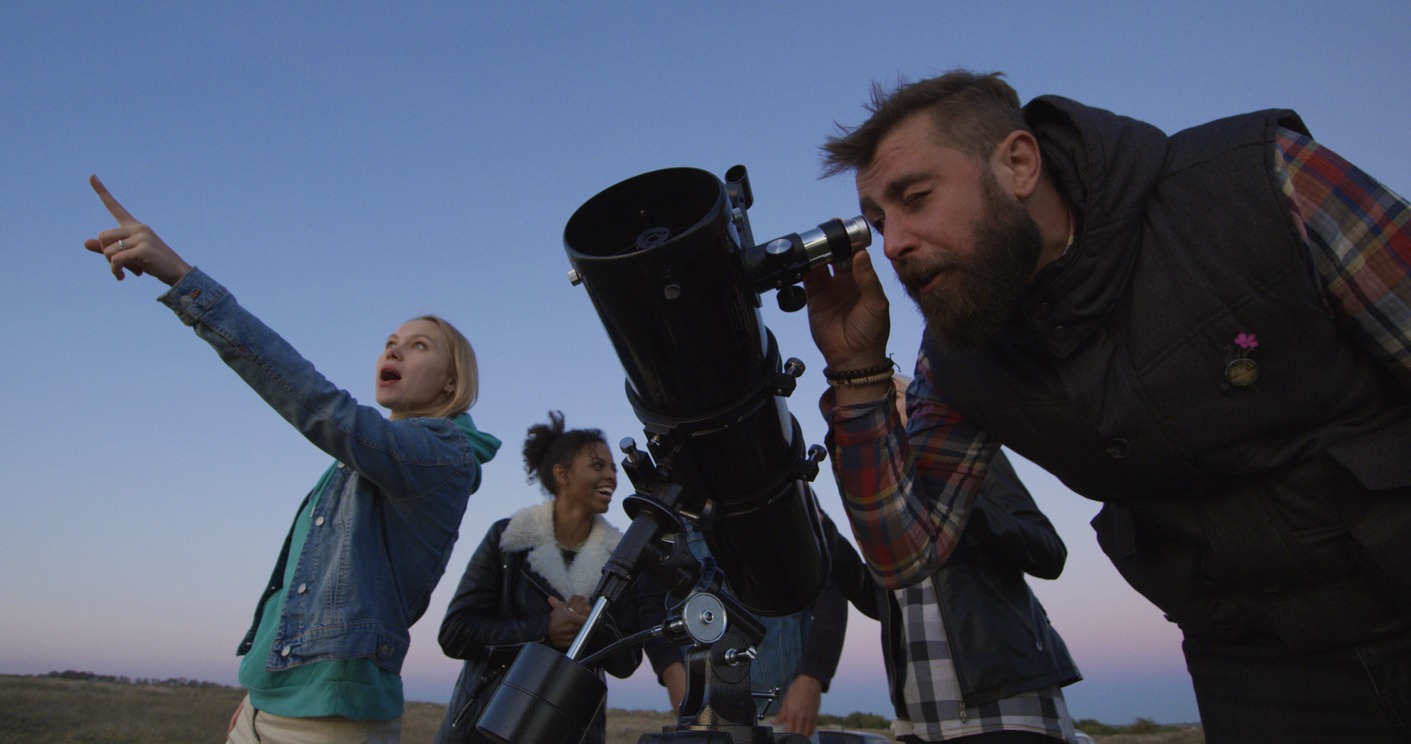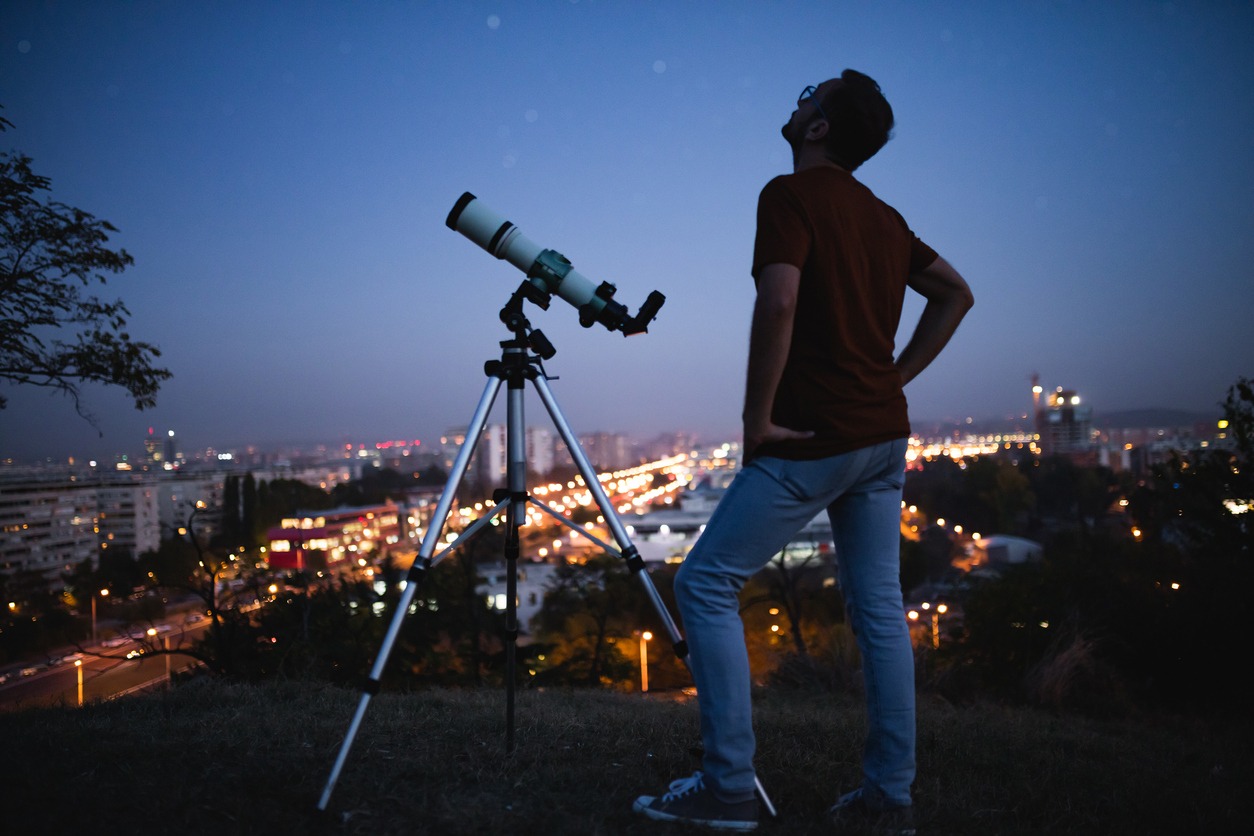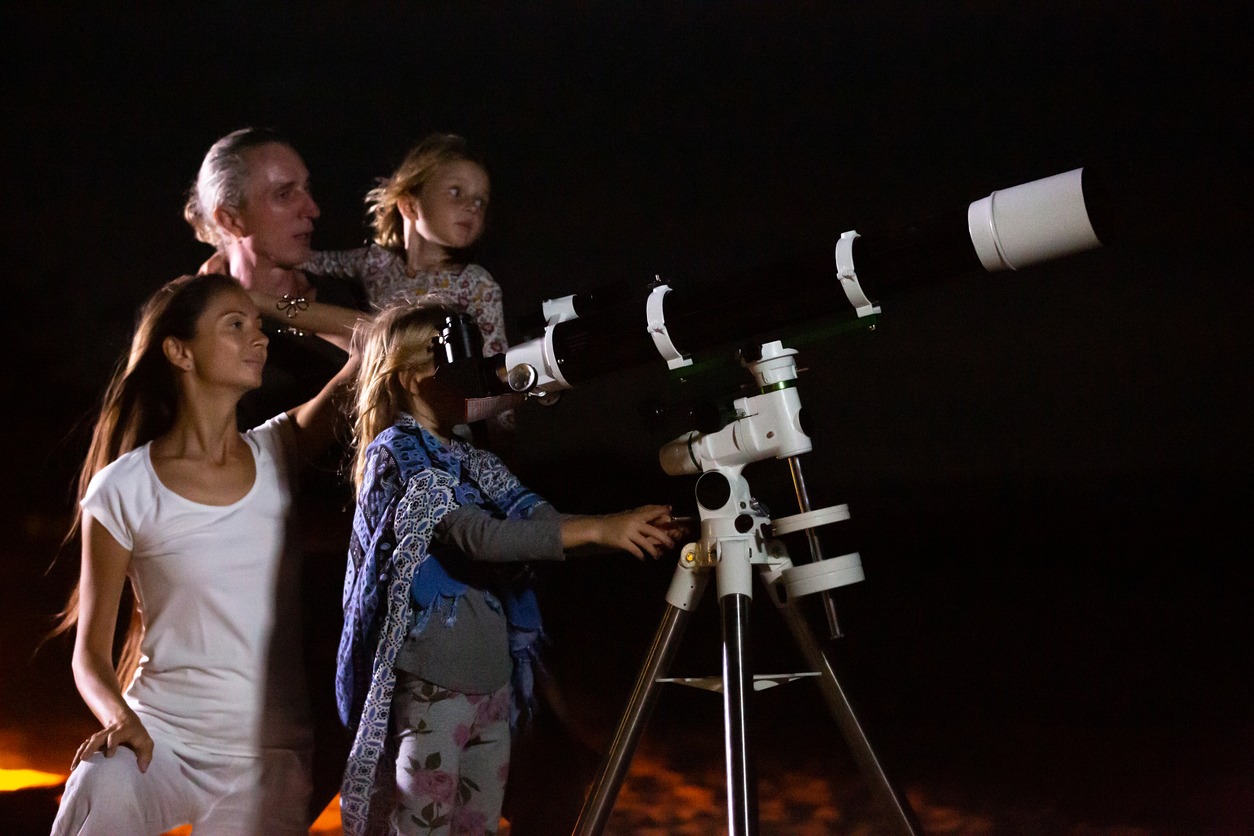A stargazing party is a fun get-together where people gather to enjoy the beautiful night sky together. It’s like a social event where folks, whether they know a lot about stars or not, come to a place away from bright city lights to look at the stars, planets, and other cool things in the night sky. People use telescopes, binoculars, or just their eyes to explore and connect with the stars, planets, and constellations.
Hosting stargazing parties is important for a few reasons. First, it helps people feel like they’re part of a group, and they can make friends and great memories. Second, it’s a chance for experienced stargazers to teach newbies about space and get them excited about it. Lastly, these parties also help in protecting the night sky from too much light, and they teach people why it’s essential to keep our nights dark for the future. By hosting stargazing parties, you give people a fun and educational experience and help them understand more about the universe and why we need to look after our night sky.
In this article, we will go through the essential components of a successful stargazing party, covering various aspects from finding the ideal stargazing location to creating the perfect astronomical ambiance, providing stargazing equipment and activities, and wrapping up with some cosmic etiquette and farewell tips. Each section provides valuable insights and tips for hosting an unforgettable stargazing event.
Choose the Ideal Stargazing Location
Finding a Dark Sky Area
When it comes to stargazing, the primary consideration is finding a location with minimal light pollution. Light pollution, caused by excessive or misdirected outdoor lighting, can obscure the night sky, making it difficult to observe stars and celestial objects. To overcome this, stargazers should seek out dark sky areas far from cities and streetlights. These areas offer the best conditions for stargazing, allowing for a clear view of the stars. Sometimes, even in urban areas, you may need to travel just 15 to 20 minutes, or up to an hour or two, to find a sufficiently dark location. To combat light pollution, consider joining the International Dark Sky Association (IDA), a group dedicated to addressing this issue. They provide information and solutions for reducing light pollution, which has been a critical aspect of preserving the night sky’s beauty.
Considering Weather and Season
Another crucial factor in choosing an ideal stargazing location is the weather and season. Different celestial events are visible at different times of the year, and weather conditions can greatly affect your stargazing experience. Check the weather forecast for clear skies and consider the season to identify the best time for stargazing. Additionally, keep in mind that specific astronomical events, such as meteor showers, comets, conjunctions, eclipses, or even the northern lights (aurora borealis), might occur on special nights. These extraordinary occurrences can enhance your stargazing experience, so plan your trips accordingly.
Scenic and Safe Locations
To make your stargazing experience not only enjoyable but also memorable, look for locations that offer a wide, unobstructed view of the night sky. Tall buildings, trees, and other obstructions can hinder your ability to see celestial objects clearly. Choosing a location that provides a panoramic view of the sky will enhance your stargazing adventure. Furthermore, prioritize safety when selecting a stargazing location. Avoid areas prone to wildlife encounters, steep or slippery terrain, and those near busy roads or bodies of water. Safety should always be a top priority during your stargazing outings to ensure a worry-free and enjoyable experience.
Permits and Regulations
Before heading out to your chosen stargazing location, take the necessary steps to secure your spot. Some locations, like parks, nature reserves, or private properties, may require permits or reservations, especially if you plan on hosting a stargazing party or staying overnight. It’s essential to check for these requirements in advance and follow any guidelines or restrictions. If you plan to stargaze on private property, make sure to obtain permission from the landowners. Respecting the environment is equally important, so remember to clean up after your stargazing event to leave the location better than you found it, preserving the natural beauty of the area for future stargazers.
Invitations and Guest List
Cosmic-Themed Invitations
To set the tone for your stargazing party, consider sending out cosmic-themed invitations. These invitations can feature images of stars, planets, or galaxies, creating an immediate sense of excitement for the event. You can find or create designs that reflect the wonder of the night sky, making your guests eager to attend. Cosmic-themed invitations not only serve as a creative way to invite your friends and family but also help convey the theme and purpose of the gathering.
 Stargazing RSVPs
Stargazing RSVPs
When planning your stargazing party, it’s essential to have an idea of how many guests will be attending. Including stargazing-related RSVP options in your invitations can be a helpful way to gauge interest and make necessary preparations. You might ask guests if they plan to bring their telescopes or binoculars, or if they have any experience with stargazing. This information can assist you in organizing the event more effectively and catering to your guests’ stargazing preferences.
Providing Telescopes or Binoculars
To ensure that everyone can fully enjoy the stargazing experience, consider providing telescopes or binoculars for your guests. Stargazing tools like these can significantly enhance the viewing experience and make it accessible to those who may not have their own equipment. You can set up designated stargazing stations with telescopes and binoculars, offering guests a chance to explore the night sky in detail. Be sure to provide some basic guidance on how to use the equipment for those who are new to stargazing.
Stargazers of All Ages
Remember that stargazing is an activity suitable for stargazers of all ages. Whether it’s a family-friendly gathering or an event for your friends, stargazing can be enjoyed by both kids and adults. Encourage guests to bring their children if they have an interest in astronomy, as stargazing can be a fantastic educational experience. Consider including activities or storytelling sessions related to the stars and constellations to engage younger participants and make the party inclusive for everyone.
Creating the Astronomical Ambiance
Dimmed Lighting and Reduced Light Pollution
To craft the perfect astronomical ambiance for your stargazing party, consider dimming the lighting in your chosen area. Hang planet-shaped lanterns, moon-inspired balloons, and add a touch of sparkle with fairy lights or glow-in-the-dark stars. Reducing artificial lighting helps your eyes adjust to the darkness, enhancing your ability to see the stars clearly. Additionally, minimizing light pollution from surrounding sources, such as streetlights or neighboring buildings, is crucial. This allows you to experience the full splendor of the night sky without interference, creating a magical atmosphere that truly captures the celestial mood.
Comfortable Seating and Blankets
To make your stargazing party comfortable and inviting, provide cozy seating arrangements. Blankets or outdoor cushions set the stage for a relaxed and enjoyable evening under the stars. As the night can get cool, it’s a good idea to offer warm blankets for your guests to wrap themselves in. Not only does this ensure their comfort, but it also encourages everyone to linger and enjoy the night sky in comfort. With comfortable seating and blankets, your guests can fully appreciate the celestial display without feeling cold or uncomfortable.
Stargazing Music Playlists
Elevate your stargazing experience by curating a stargazing music playlist. Music can enhance the ambiance and add an extra layer of enchantment to your event. Consider songs that reflect the wonder and mystery of space, such as “Galaxies” by Alice Phoebe Lou or “Space Song” by Beach House. These tracks offer soothing, dreamy, and contemplative melodies that complement the celestial surroundings. Playing this type of music softly in the background can make your stargazing party even more magical, allowing guests to connect with the universe through both sight and sound.
Campfire or Fire Pit
To add an extra touch of coziness and create a focal point for your stargazing party, consider having a campfire or fire pit. Gathering around a warm fire enhances the overall ambiance, providing a sense of togetherness and comfort. It also helps keep guests warm on cooler nights, ensuring everyone can fully enjoy the stargazing experience. Just be sure to follow safety precautions and local regulations when using an open flame. With a campfire or fire pit, your stargazing party becomes not only an astronomical adventure but a delightful, shared experience that leaves lasting memories.
Stargazing Equipment and Activities
Telescopes and Binoculars Setup
The centerpiece of any stargazing party is the telescope. Telescopes offer a closer and more detailed view of the stars and planets, enhancing the stargazing experience. When planning your event, take the time to research and select the right telescope that suits your needs. Various types of telescopes are available, each with its unique features and benefits. If you don’t have access to a telescope or want a more portable option, consider using binoculars. Binoculars are user-friendly, easy to carry, and surprisingly effective in providing a detailed view of the night sky. They offer a great alternative for stargazers who want to explore the celestial wonders.
Star Maps and Constellation Guides
Navigating the night sky can be a fascinating but challenging endeavor. To assist your guests in exploring the stars, provide star maps or planispheres. These tools display the positions of stars and planets and help identify constellations and other celestial objects. Choose a star chart or planisphere that is user-friendly and suits the needs of your stargazing party. By having these guides on hand, you empower your guests to navigate and learn about the night sky, enhancing their stargazing experience.
Astronomy Educators or Guides
While stargazing is the primary focus of your party, having additional activities in place is essential to keep your guests engaged. For stargazing-related activities, encourage your attendees to identify constellations using the provided star charts or apps. Moon viewing, depending on the lunar phase, is also an excellent stargazing-related activity, allowing guests to observe the lunar surface with binoculars or a telescope. Depending on the time of year and location, planets like Venus, Mars, Jupiter, and Saturn may be visible, making planet spotting an exciting activity.
Celestial Activities and Games
In addition to stargazing-related activities, consider incorporating non-stargazing options to entertain your guests. Glow-in-the-dark games like frisbee or cornhole can be a hit, even in low light conditions. Storytelling around a campfire or fire pit is an excellent way to share tales of constellations or recount past stargazing adventures. Organizing an astronomy trivia game can test your guests’ knowledge and engage them in friendly competition. To ensure that all your guests, regardless of age or experience, can enjoy these activities, customize them to cater to the audience. Engage children with simple stargazing-related activities like moon viewing or constellation identification. Encourage experienced adult stargazers to bring their telescopes or binoculars, and for mixed-age groups, plan activities that are accessible to all, setting up different stations for stargazing-related activities, and offering a range of non-stargazing activities that can be enjoyed by everyone.
Cosmic Etiquette and Farewell
Light Pollution and Darkness Preservation
As your stargazing party draws to a close, it’s important to emphasize the importance of preserving the darkness for future stargazing enthusiasts. Encourage your guests to turn off any unnecessary lights and to avoid using regular flashlights, as these can disrupt night vision. Instead, provide red-light flashlights or recommend the use of smartphone apps with night mode settings, as these options are less likely to interfere with the celestial spectacle. By practicing good light etiquette, you not only contribute to a better stargazing experience but also help protect the natural environment and the beauty of the night sky for generations to come.
Safety Measures and First Aid
Before bidding farewell, take a moment to review safety measures with your guests. Remind them of the potential risks associated with nighttime activities and encourage caution when moving around in the dark. Instruct everyone on the proper use of any fire or heating sources, if you had them at your party. It’s also wise to have a basic first aid kit on hand in case of minor injuries or accidents. Familiarize your guests with the kit’s location and contents and designate someone responsible for first aid assistance if needed.
Thanking Guests and Astronomers
Express your gratitude to your guests and any astronomers or enthusiasts who shared their knowledge and equipment during the stargazing event. A heartfelt thank you can go a long way in making everyone feel appreciated and valued. Acknowledge the efforts and enthusiasm of those who made your party a success, and let them know how much their presence and contributions meant to you. Consider sending a follow-up note or message after the event to express your thanks once again, reinforcing the sense of community and camaraderie.
Parting Souvenirs and Stargazing Guides
To leave a lasting impression, offer parting souvenirs and stargazing guides to your guests. These can include items like celestial-themed keychains, stickers, or bookmarks. Stargazing guides, whether physical or digital, provide valuable information on upcoming celestial events, stargazing tips, and resources for further exploration. By giving your guests these tokens of appreciation, you not only provide them with lasting mementos of your stargazing party but also equip them with tools to continue their own cosmic journeys.
Conclusion:
Remember that the success of your stargazing party is not only about the celestial sights but also the shared experience and appreciation for the wonders of the night sky. By incorporating this comprehensive guide provided, you’ll ensure a memorable and enjoyable event for all your guests.






